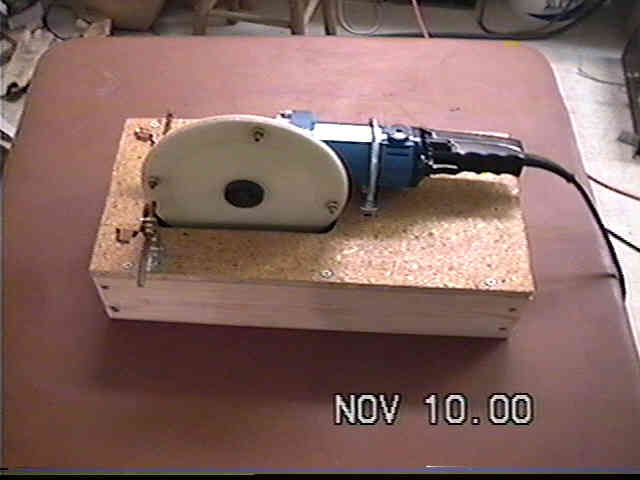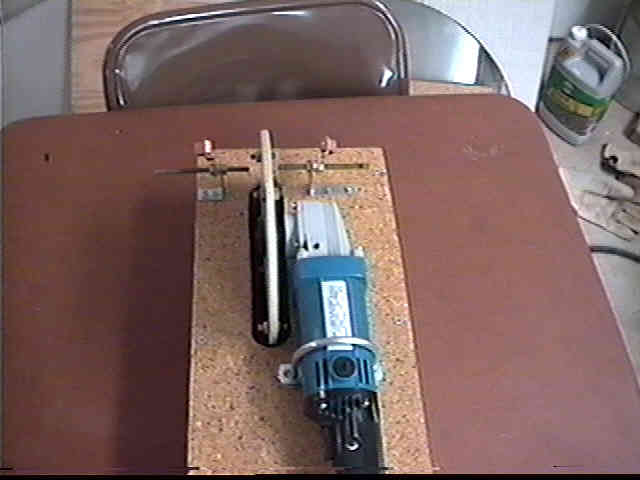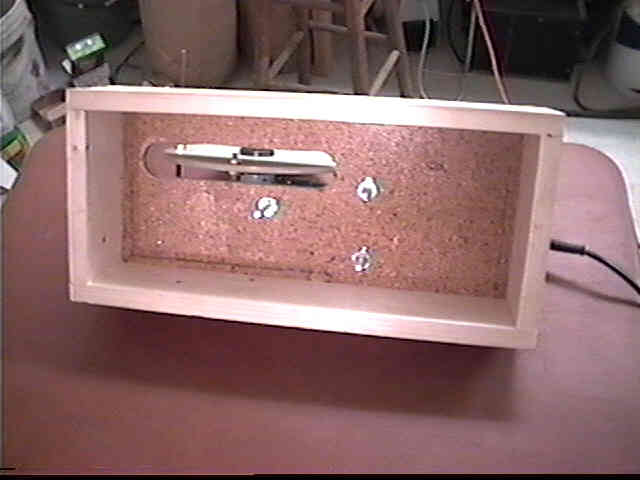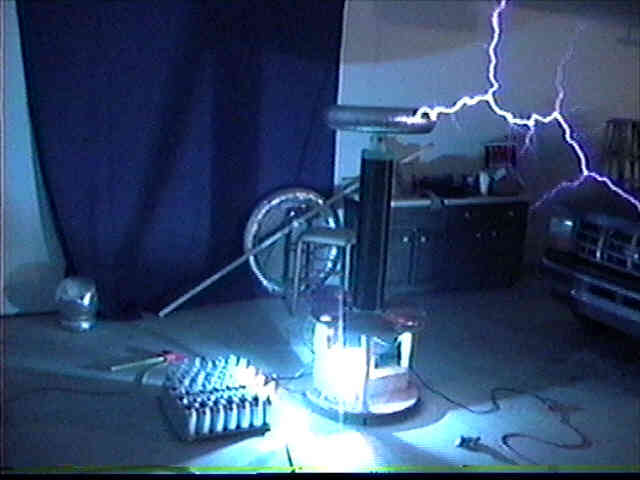

Rotary Spark Gap
This is my new 10,000RPM asynchronous rotary spark gap. My design is based on a similar RSG showcased by Finnish coiler Marco Denicolai on his Tesla coil web site. The heart of the thing is a cheap, Chinese angle grinder I bought at a truck sale for $20. The sticker says it's rated at 450W. I fabricated the 8-inch diameter rotor from four disks of .060 inch G-10 unclad printed circuit board stock sandwiched together to make a stack nearly 1/4 inch thick. The center hole is 7/8 inch to fit my angle grinder arbor. The four flying electrodes are set at 7 inches diameter and are made of 1-inch chunks of 1/4 inch threaded brass rod. The two fixed electrodes are also made of brass rod set in angle brackets. I made them a bit long so I can feed them in as they erode away. So far they've held up pretty well though. Info on the Tesla coil web ring led me to believe that Tungsten electrodes were almost mandatory, and that brass would burn away quickly. This has not been my experience at all, and the brass rod seems pretty durable.

I'm no machinist. I cut out the four rotor blanks with an electric jigsaw. I drew the rotor template on graph paper, laid it right on top of the G-10 disks, and marked all the hole centers with a sharp punch. I bored the holes with an ordinary bench top drill press. The flying electrodes are secured with brass nuts. I didn't glue the four circuit card disks together. I was afraid uneven application of cement might unbalance the rotor, so the electrodes and center arbor hold the sandwich together. I balanced the thing by pressing a sanding block with coarse sandpaper against the edge of the rotor as it spun. Vibration at 10,000RPM is negligible, so I guess this worked pretty well. I also carefully filed all four flying electrodes to exactly the same length using a 1-inch gap in my vise as the standard.

The pedestal is made of 1/2 inch particle board set on a box made of 1" x 4"s. I cut a slot in the particle board to accommodate the edge of the rotor. I fastened the angle grinder in place with a U-bolt and a 5/16" carriage bolt. The carriage bolt is screwed into a threaded socket on the side of the grinder head intended for an extra grip handle. The U-bolt and carriage bolt through the particle board results in a rock solid three-point mount. The whole thing was cheap & easy to build. As usual, I made maximum use of things already on-hand in my junk collection. The only thing I bought new for it was a couple of heavy-duty copper ground lugs for the HV connections.

Performance is most satisfactory. On my 6-inch coil supplied with 4400VA from my 11.5kV pole xfmr, I get 3-5 simultaneous streamers up to 60 inches long from the 4" x 20" drainpipe toroid. If I want longer sparks, I'm just going to have to break down and get a bigger toroid. I don't own an oscilloscope, so I have no idea what's going on with the firing, quenching, etc. I get best sparks at full-blast (10,000RPM / 666bps), so I removed the lamp dimmer I had been using as a speed control. Noise level is appalling, and hearing protection is a must. Just the angle grinder by itself is pretty obnoxious. With the spark gap firing, the thing screams with a high-pitched whine, like a jet turbine. Run it indoors, and spectators will cover their ears. Run it outdoors, and the scream will carry for blocks.
